Holy Mother of God! Not even in my worst nightmares have I went to the place I am going to today: one of the most important sacred lakes in Tibet, that is at an altitude close to 5,000 meters. FIVE THOUSAND! It is like training for the Everest… Why did I want to see a lake on the very top of the mountain?
In the lobby of my Lhasa hotel there is a “High altitude reaction treatment center” or simply put, “doctor’s office”. There, there is a Chinese who cannot speak a word of English. But he is ready to help you if you are breathless… in the very literal sense of it.
The first solution? The oxygen sprays. They are 5-10 Euros per piece. I have to admit I have never seen anyone buying, although I saw them in different places. I guess the other tourists think just like I am: what can the brains understand if it gets oxygen one moment and the next it does not?
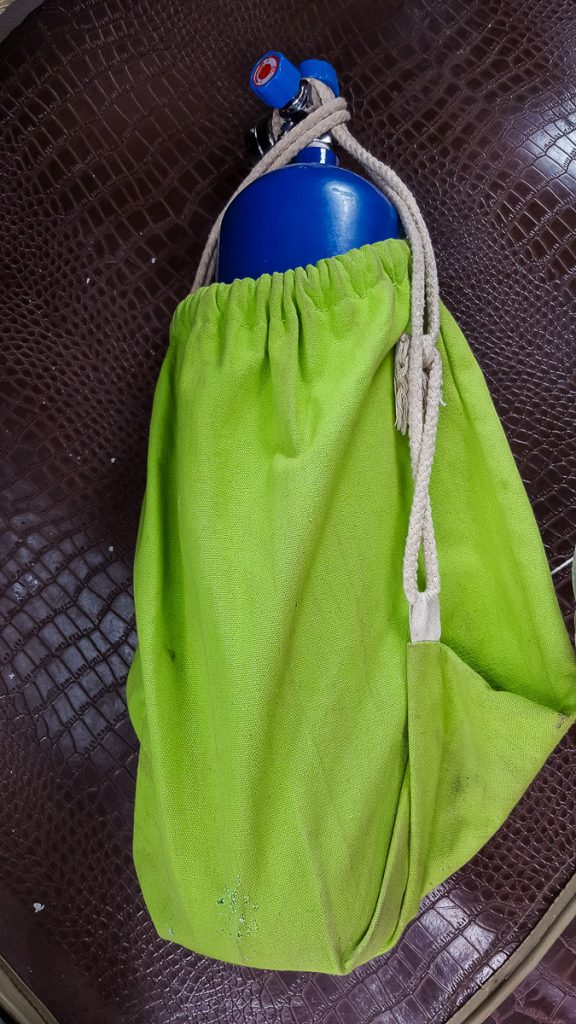
In the car that takes us there, the guide introduces me to a new friend: the oxygen tube. J God, this cannot be good!
He assures me that he knows how to use it, that he is perfectly able to do cardiac massage and he can always take me to the hospital… and any other heroic facts that are meant to reassure me… L
I look at the tube trustfully and I pray that I will never need it. Because, if I need it, the trip ends… somewhere in a hospital.
I ask the guide if we, the normal altitude people have problems when we come here, don’t they have problems too when they go down from Tibet to the rest of the world? Of course they have. Too much oxygen. J But he cannot describe the feeling, because he only went out of Tibet once, when he was a teenager, to Nepal. That is all.
Breathing is a huge effort ever since I arrived here, so I start reading about the level of oxygen and the way one feels it depending on the area. Although air has 20.9% oxygen no matter what the altitude is, the low pressure of the air at high altitudes makes you feel there is less oxygen. Here, for example, you feel some 63% from what is normal. And wait until we go to 5,000 meters. There will be even worse: a bit over 50%.
The travel by car is accompanied by one question that I repeat over and over again: “Is it going to be all right there?”
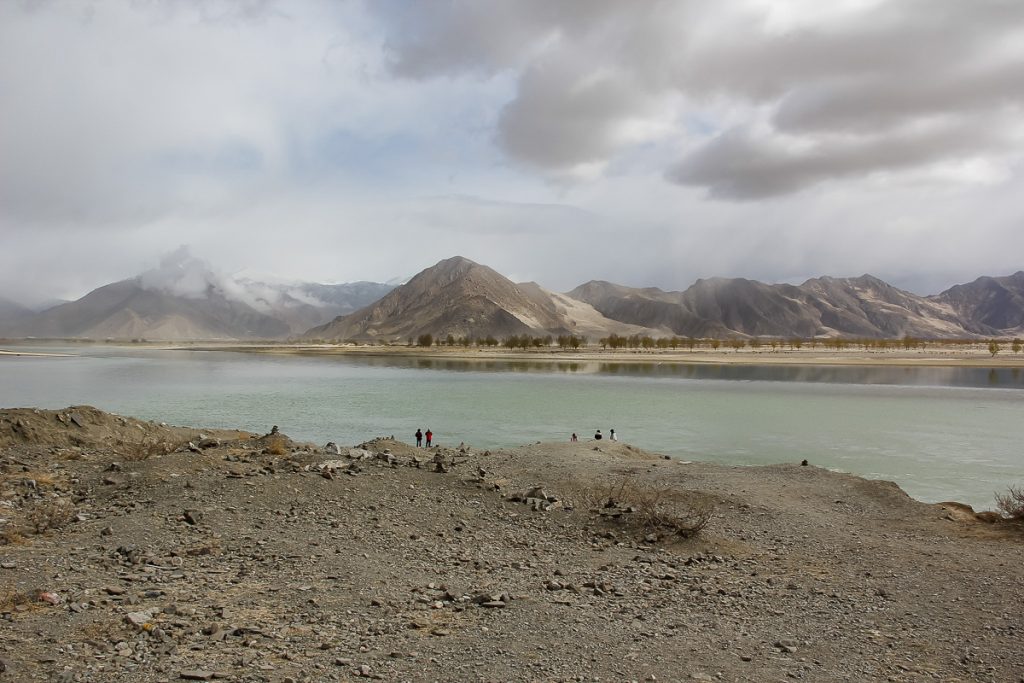
A short stop half way there, in a strange landscape, as if from another world.
We stretch. The guide asks me if I need to go to the toilet and he shows me some bushes on the mountain. He tells me to go there, because the toilets in Tibet are not really all right… As if I hadn’t noticed!
You know, here, if you need to do “number 2” in a place where there is no toilet, you can go somewhere in the landscape, no problem. But you have to do the following: dig a 25 cm deep hole, bury the poop and burn the toilet paper used and bury it too. And, of course, you have to cover the hole. Seriously! This is not a joke!
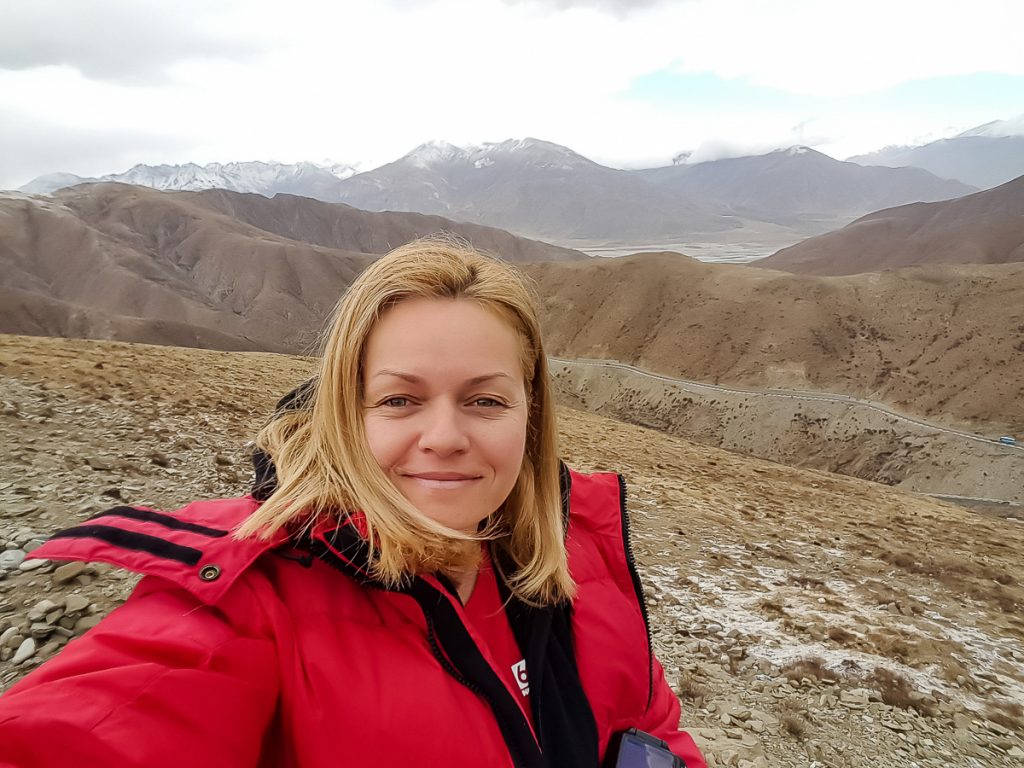
#iresist or what cannot be seen in the selfie: the symptoms I have before, the tingling in the fingers, toes and lips are gone, but now my nose and my cheeks shake. It is as if I were really connected to electric power… Not very powerful, but it feels terrible!
And today, I had a new sensation that makes me panic a little: I started feeling a burn sensation in my throat even before leaving. I feel like a fakir who has just swallowed some flames. Wondering what I do? I enjoy the trip.
The prayer flags are wonderfully put on a mountain, that I took a photo of from the moving car, remind me of the ones seen on the buildings in Lhasa. They are all over the place, on the roofs, the mountains, around the rivers – wherever the wind blows. This way the wishes and the prayers of the Tibetans are taken by the wind.
The five colors are the colors of nature: blue – the sky, white – the clouds, red – the fire, green – the water and yellow – the land.
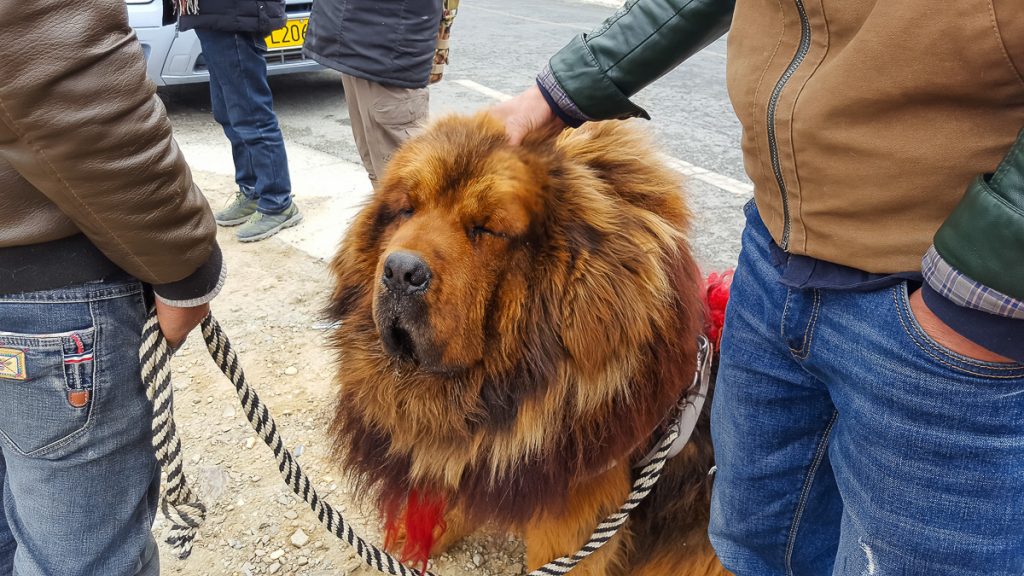
The Tibetan dog – the oldest and most expensive breed in the world. They say it is the ancestor of all the large dogs in the world. This one is so nice, that I feel like patting it. J I took the photo “illegally”. I had to pay, especially if I wanted to be in the same photo with it.
These dogs are not from the area where we are, they are brought here from the East, to make money for some people…
And speaking of money, some years ago, a Tibetan dog broke all records in the value department; a very rich Chinese bought it for the fabulous sum of 1.5 million Euros. And this way it entered the Guinness Book as the most expensive dog in the world.
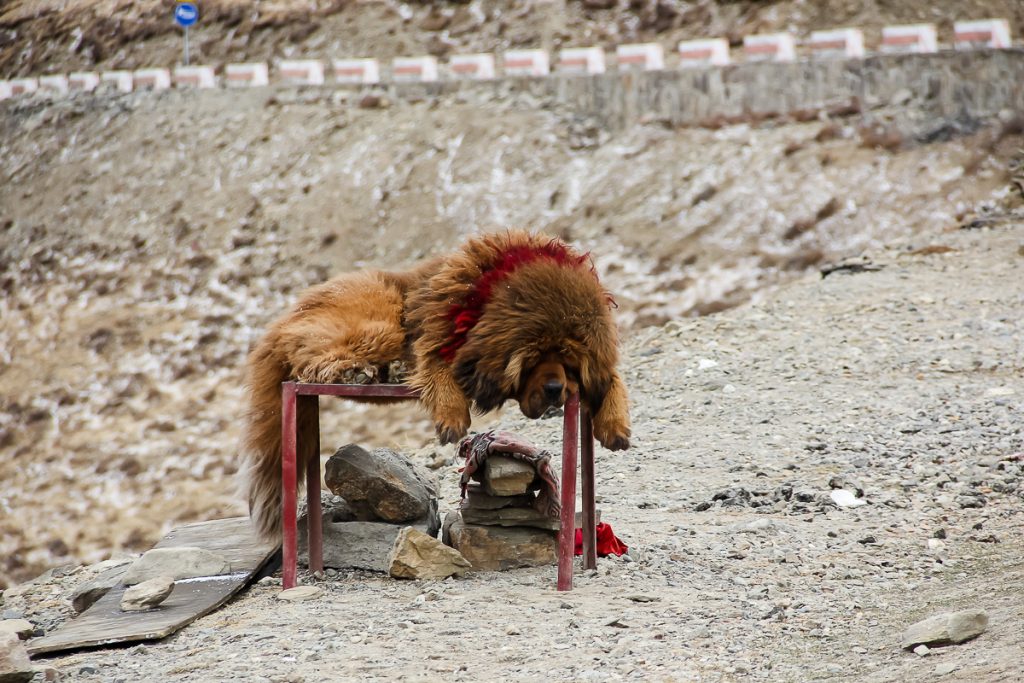
THE TIBETANS THINK THAT LAKE HAVE SPIRITS AND THIS BRINGS A LOT OF PILGRIMS HERE
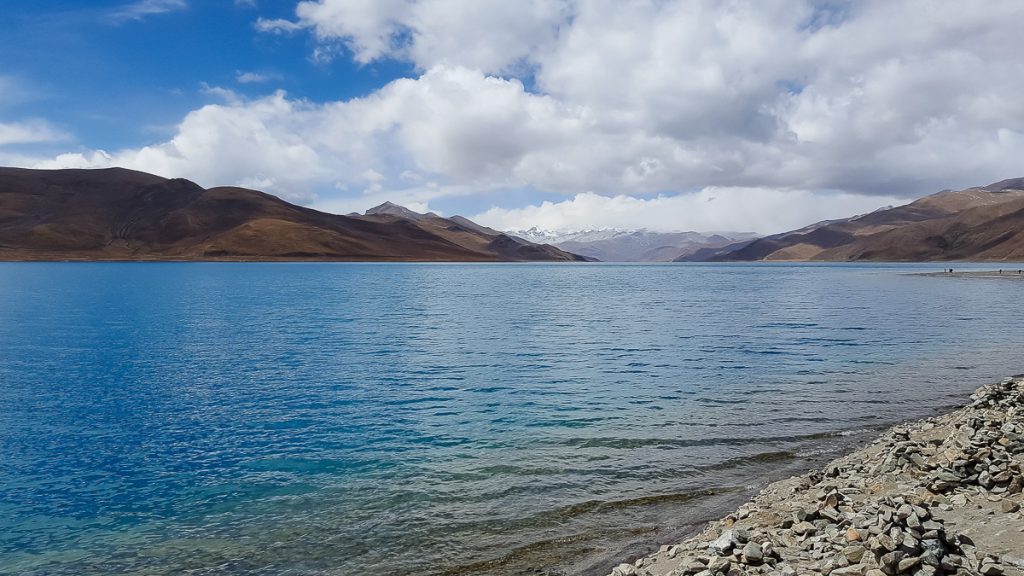
Found at 4,441 meters altitude, YAMDROK is one of the three great sacred lakes of Tibet. Namtso, another sacred lake here is the highest salt water lake in the world – 4,718 meters.
You are not allowed to swim in the sacred lakes, as you are not allowed to sit on sacred objects or to step or go over the prayer flags.
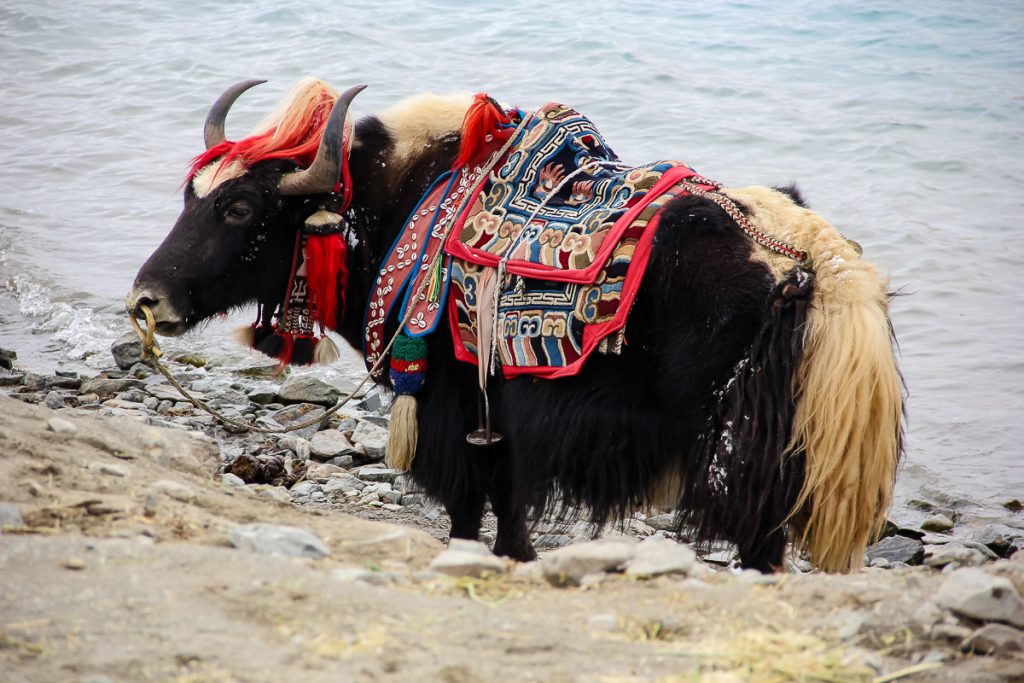
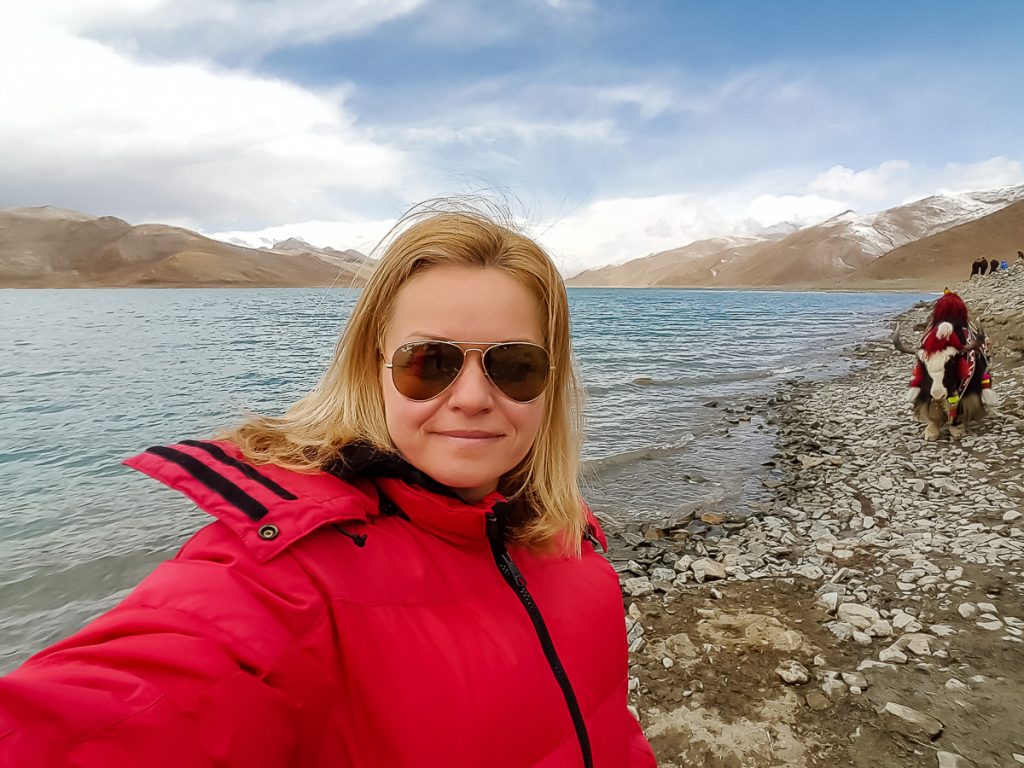
On the shore of the lake, the Tibetan merchants dressed up some yaks for the tourists. For a small amount of money, that can be negotiated, anybody can take a photo with the favorite yak. I started “testing the ground” and taking illicit photos while the owner was negotiating with some Chinese people. J
There are thousands of yaks in Tibet. There are two types of yaks: the domestic ones – bred in households, used for transportation, …eaten or used for touristic purposes, like the ones in this picture and the wild ones, which are larger than the domestic ones. They are very strong and enduring!
The domestic yak is present in the Tibetan menu. So is sheep. And milk. These people eat a lot of protein for this very harsh weather. But they don’t eat fish. My guide says he has never eaten fish! What?! The explanation: “If we live on earth, why look for food in the water?”…
He also tells me that the Tibetans never hunt wild animals, because “they belong to nature”. The only exception are those whose life depends on hunting or fishing, as they live in forest areas or close to Bramabhutra River.
The most valuable is the white yak. That is why, if you have one in your yard, you are not allowed to kill it. I saw some white yak furs but I understand that they are from the animals that died of natural causes.
The Tibetans (Nomads and farmers) use the yak hair to make tents. They are very resistant in the mountains, in extreme temperatures (during summer, as well as during winter). As far as I understood, the yak hair has a special characteristic that allows the cloth made of it to tighten or expand stopping the cold air or allowing the warm one to get in, as needed.
(In the Potala Palace I saw some yak hair curtains that have been there forever.)
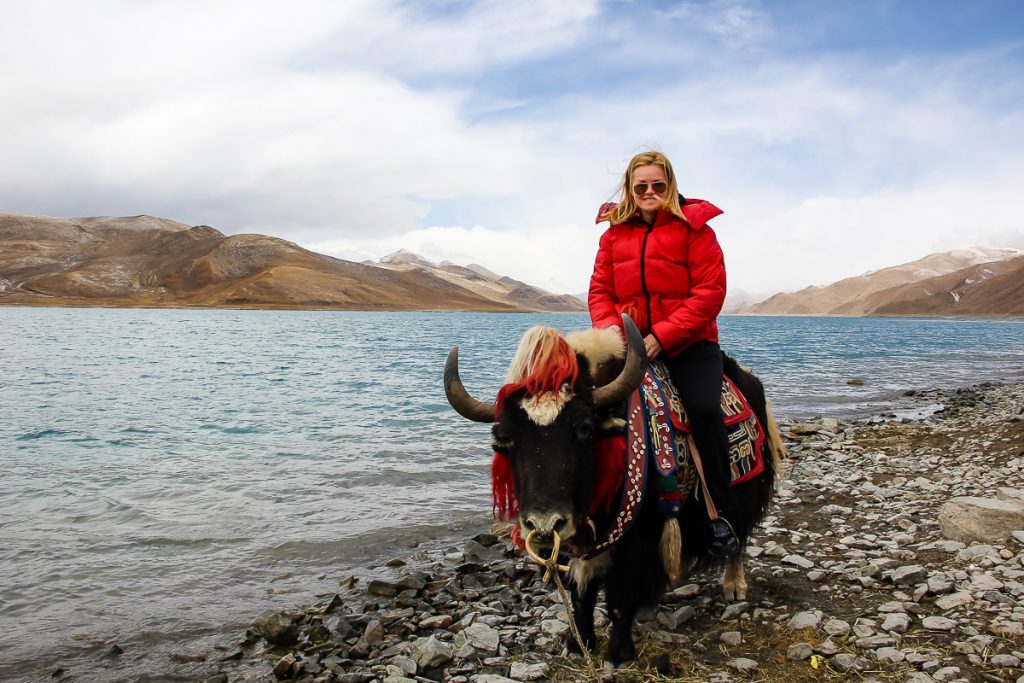
After a very tough negotiation (from 10 yuans to 5, which is less than one Euro), here I am riding the situation haha. It is not as simple as you might think. When I wanted to get on, the yak started kicking… God! I thought that he would kick me to the other side of the lake, no less!
I CAN STILL BREATHE. SO… LET’S GO A LITTLE BIT FURTHER UP!
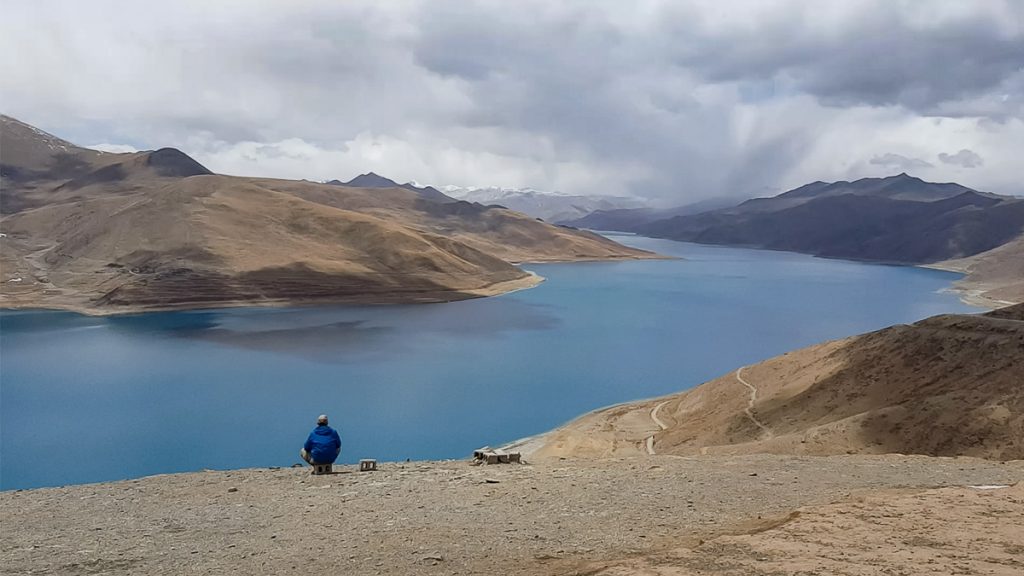
They say the Yamdrok Lake has the most beautiful water in the world. To me it seemed unreal beautiful. And in this place, right above the lake, you become zen instantly… “No filter”, that is what I called it when I posted the photo on Facebook. In reality it is just like you see it in the photo.
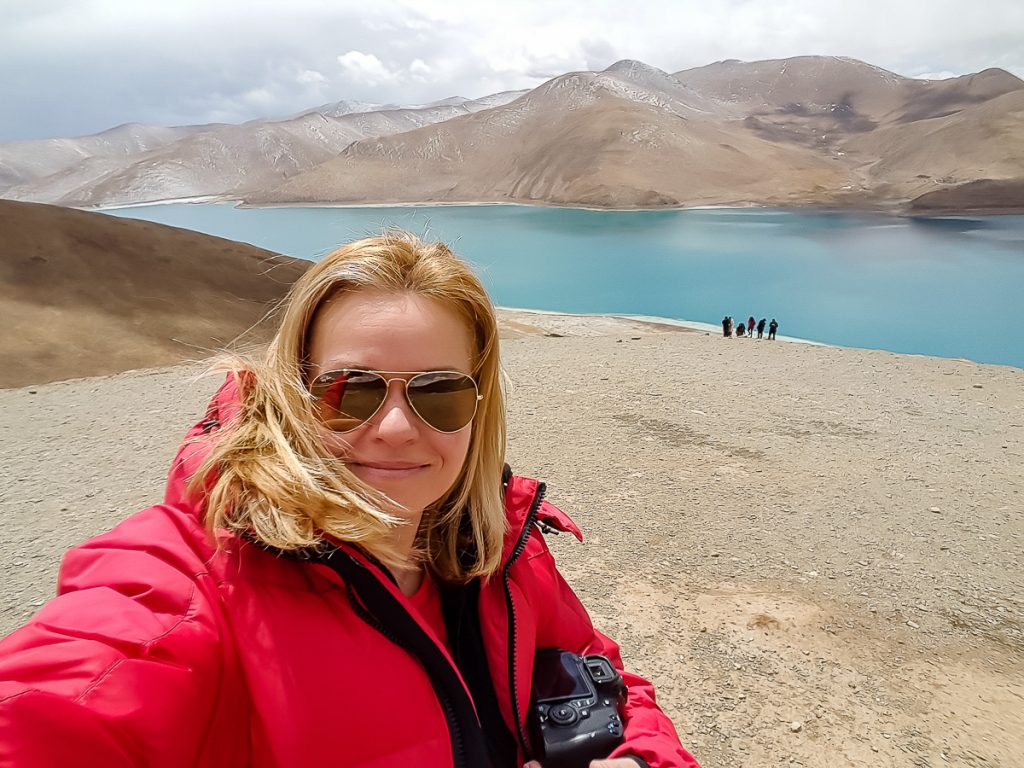
I am at 4.677 meters. Once, you could come by car to this place where I took the photo. Now, you have to park of the road and walk. That is because, some time ago, a car fell all the way down to the lake! The truth be told, the ground here does not give you any certainty not even as a pedestrian.
We went a little bit more up and got to a very noisy area. A few buses unload lots of Chinese tourists. I see some European faces too. I start towards the points of interest up here.
A few Tibetan dogs are ready for photos. Poor things, they really wanted to sit, but the owner kept making them stand, to look nice for the tourists. L
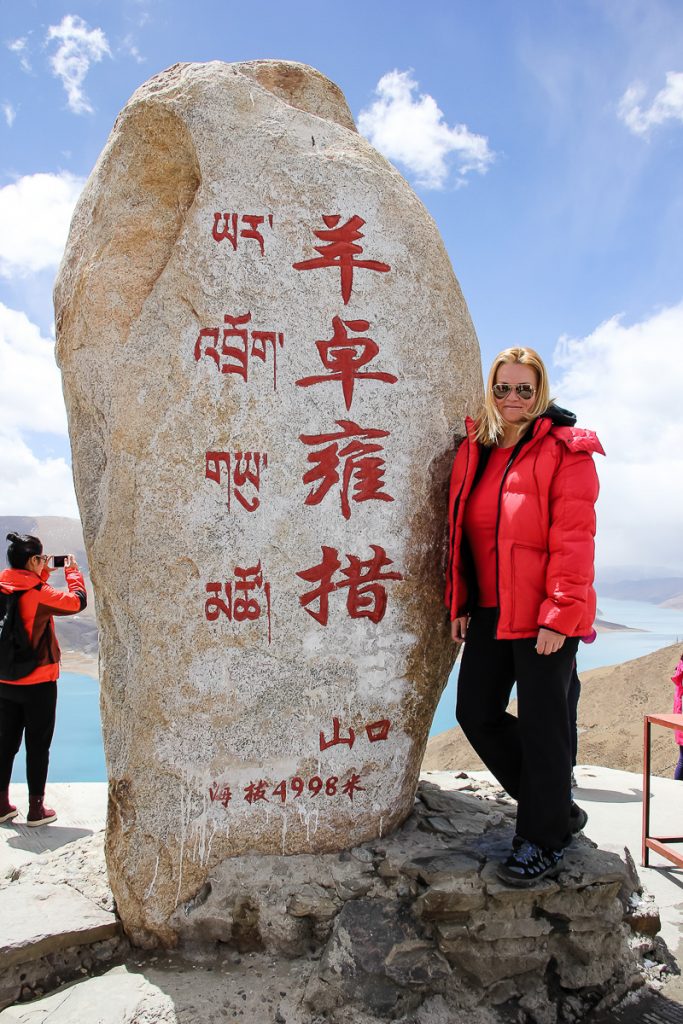
A precious moment, not only because the photo is take at 4,998 meters, as you can read on the stone, but also because behind the photographer an army of Chinese tourists is about to invade the place. I could hardly catch two seconds… J
After taking the picture, I am told that, in fact we are at about 4,800 meters. I understand that the guides and tourists who have special devices discovered that this place is at only 4,800 meters. The Tibetans continue to sell the 4,998 meters. Who cares? This is a record for me, even if I am at only 4,800 meters altitude!
I get down, to avoid being killed by the Chinese who want photos with the stone too and we start back to Lhasa.
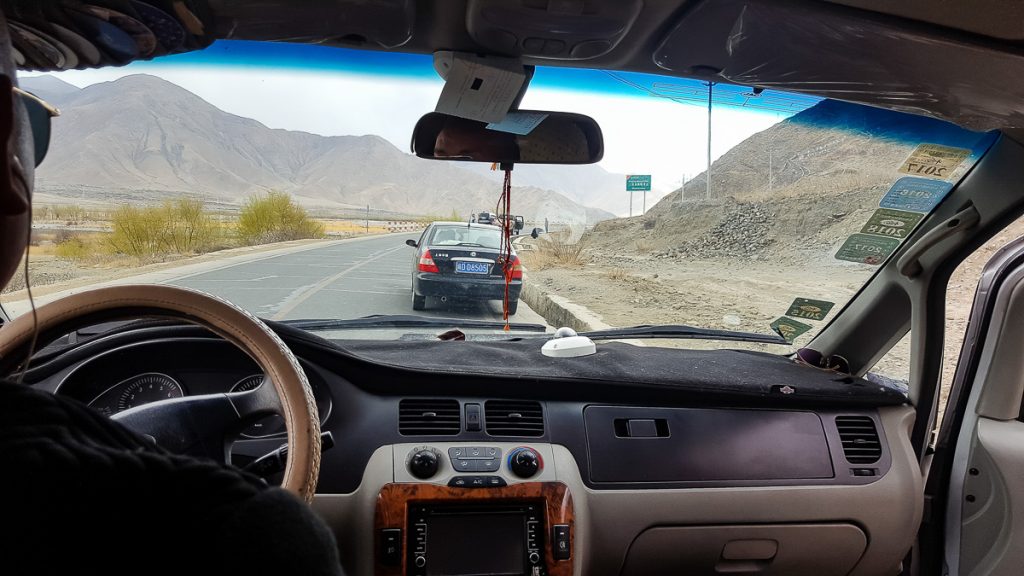
We were driving for some time when, suddenly we stopped in the middle of the road. Why?? I ask. Because, on this sector of the road there are two radars – one at one end and the other at the other end and they calculate the average speed you had on the distance between the two of them. If you are over the limit, they stop you and you have to pay a fine. So all the cars, ours included, stop for 5-7 minutes, so that the average speed is within the legal limits. Ain’t it cool?
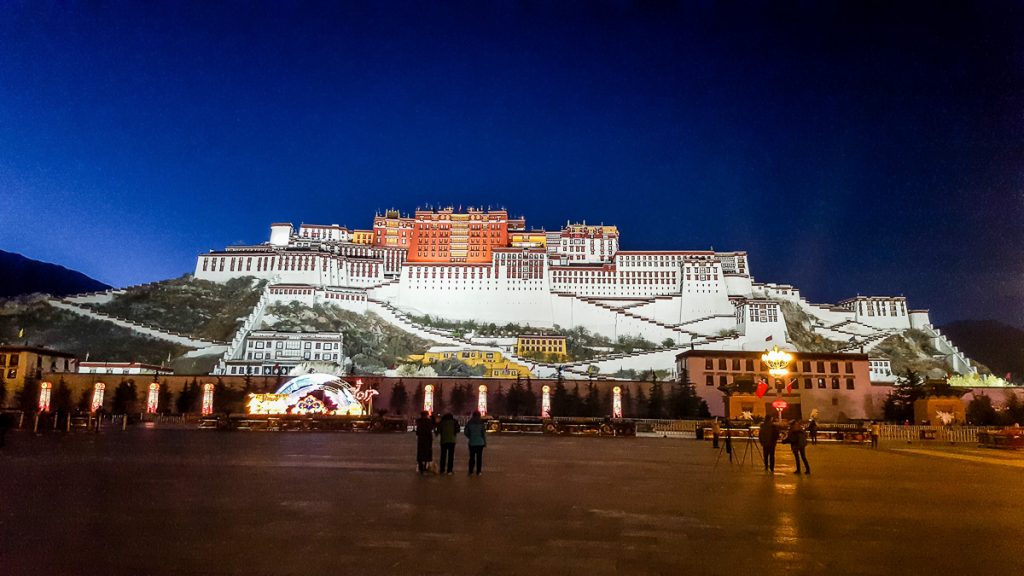
“The Tibetan Buddhism is about compassion”, tells me the guide during an evening walk in the square in front of the Potala Palace. “The current Dalai Lama is the embodiment of the compassion Buddha”.
He reminds me that the red part of the palace is the religious part, the white one, larger, is the administrative part. This is where the living room and bedroom of Dalai Lama are.
Then he shows me the Chinese flag on the roof of the Palace. Tibet has its own flag, but you cannot find it. It is prohibited… After the story of Hong Kong coming back to “mother-China”, they have put here too, everywhere, the Chinese flags. With the same significance.
I go to the hotel to gather my things. I am leaving tomorrow. But I have some good hours left to go back to the place that fascinated me a few days ago with its crowd of pilgrims and their rituals. I have never seen such a thing!
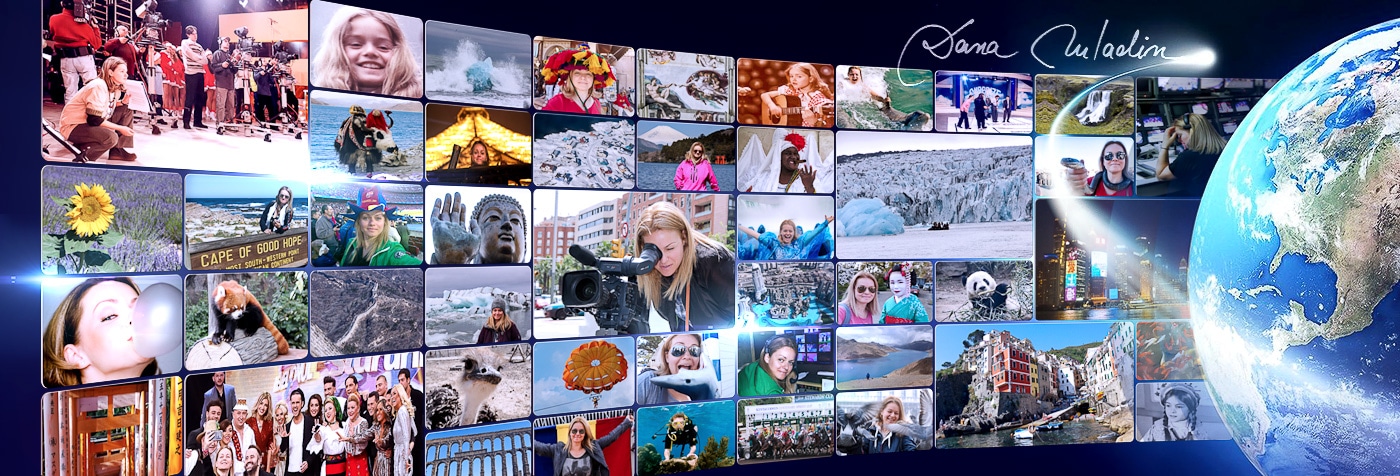

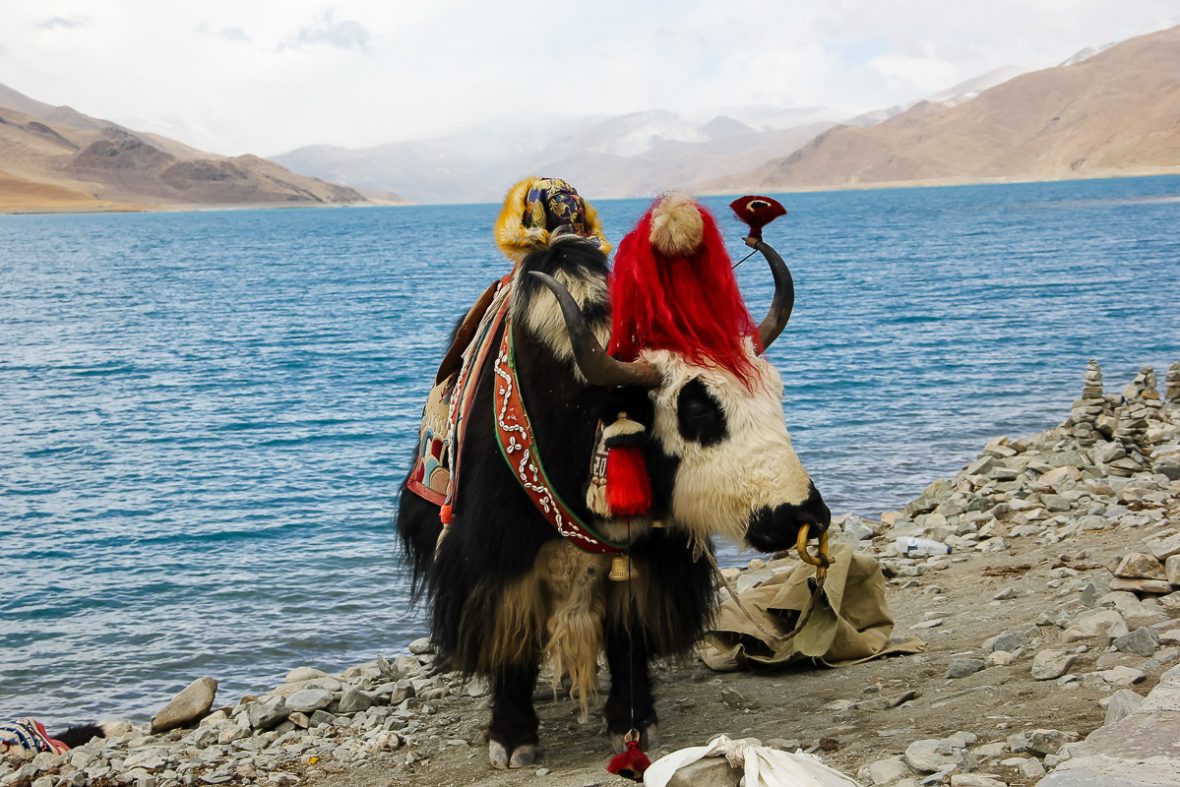

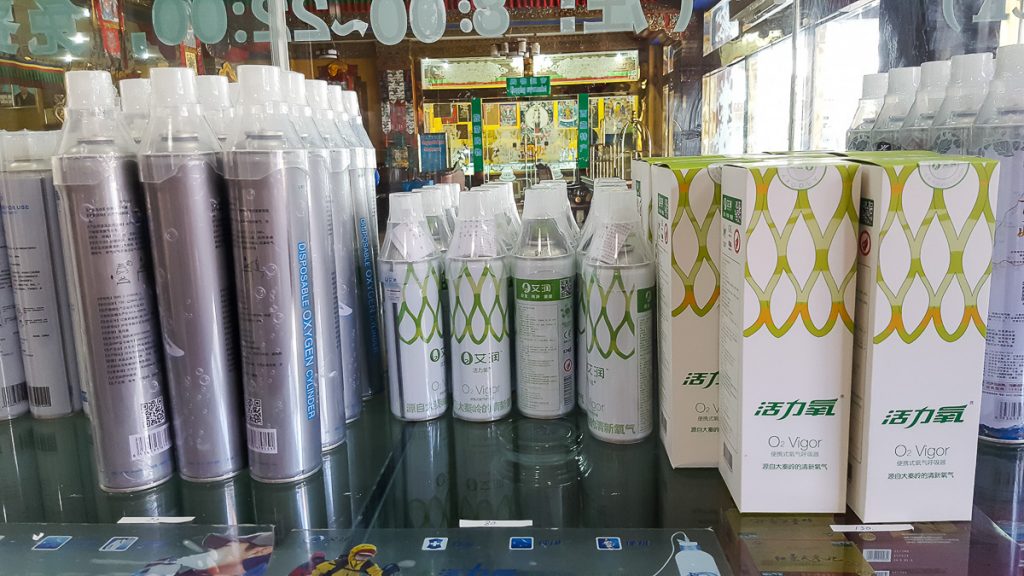
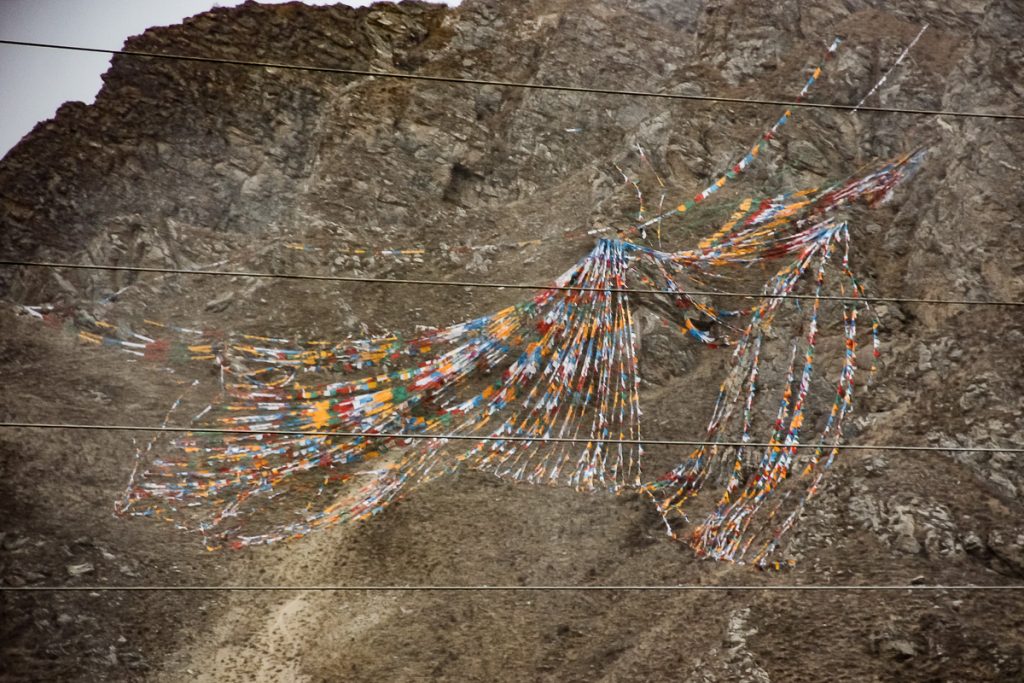
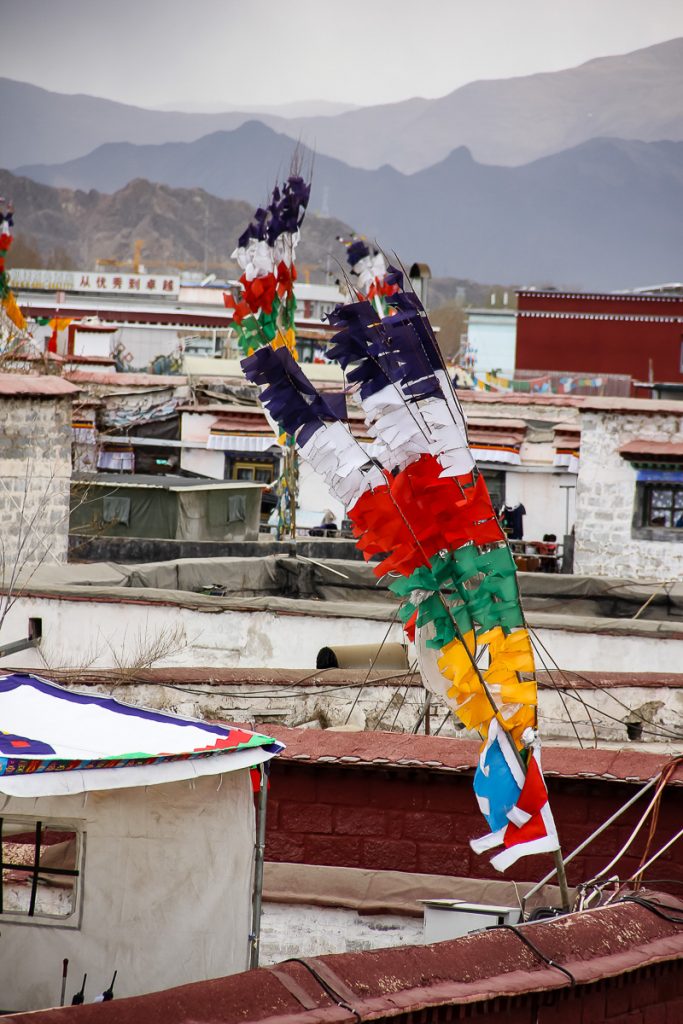
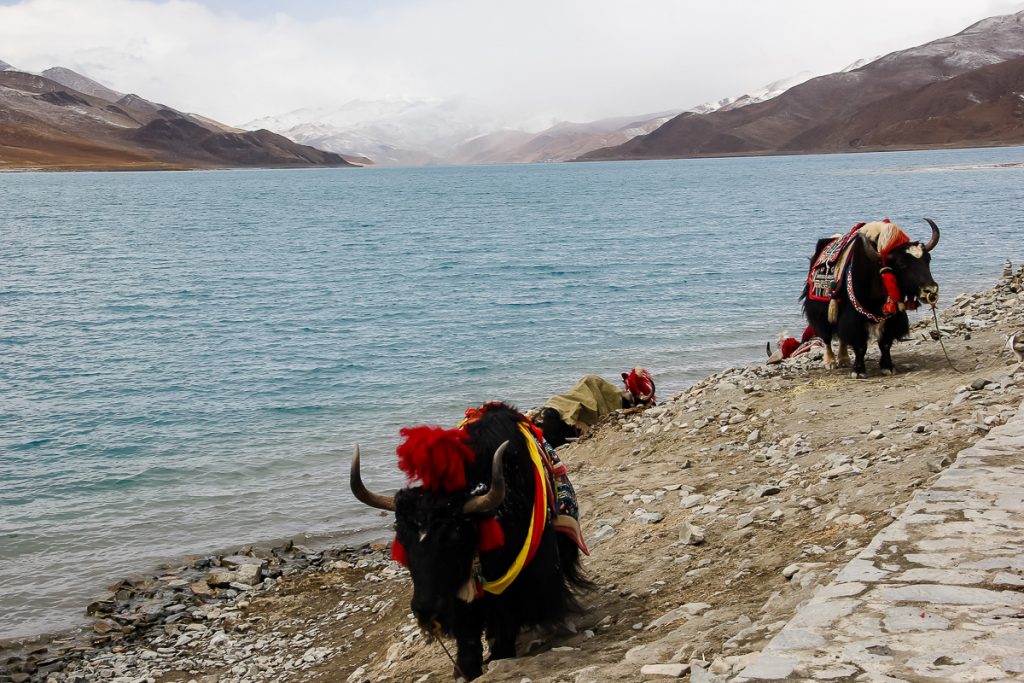
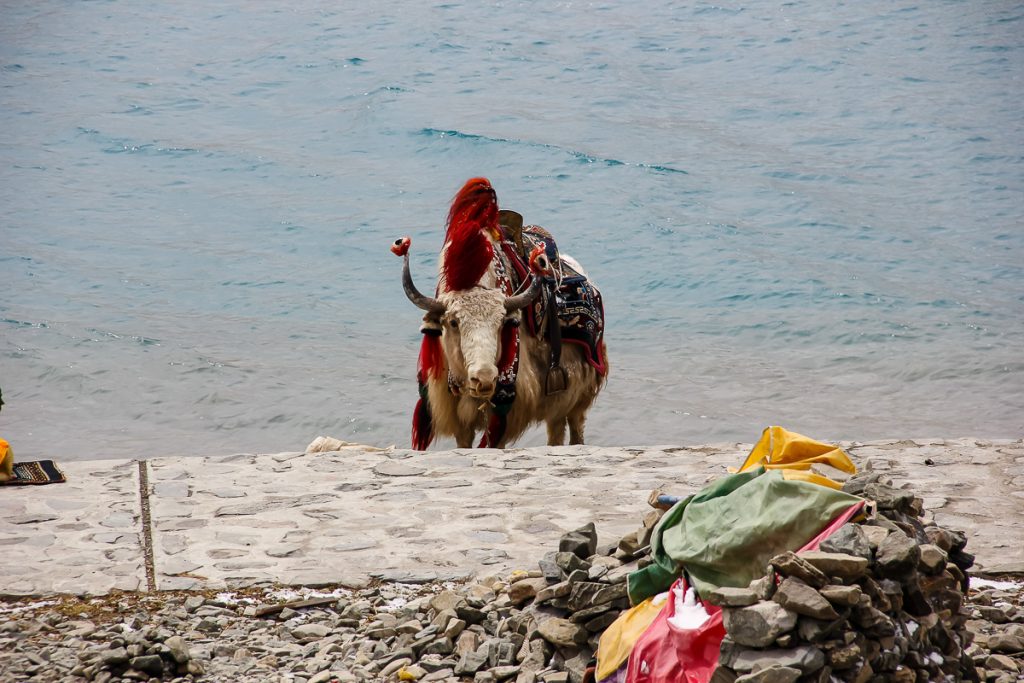
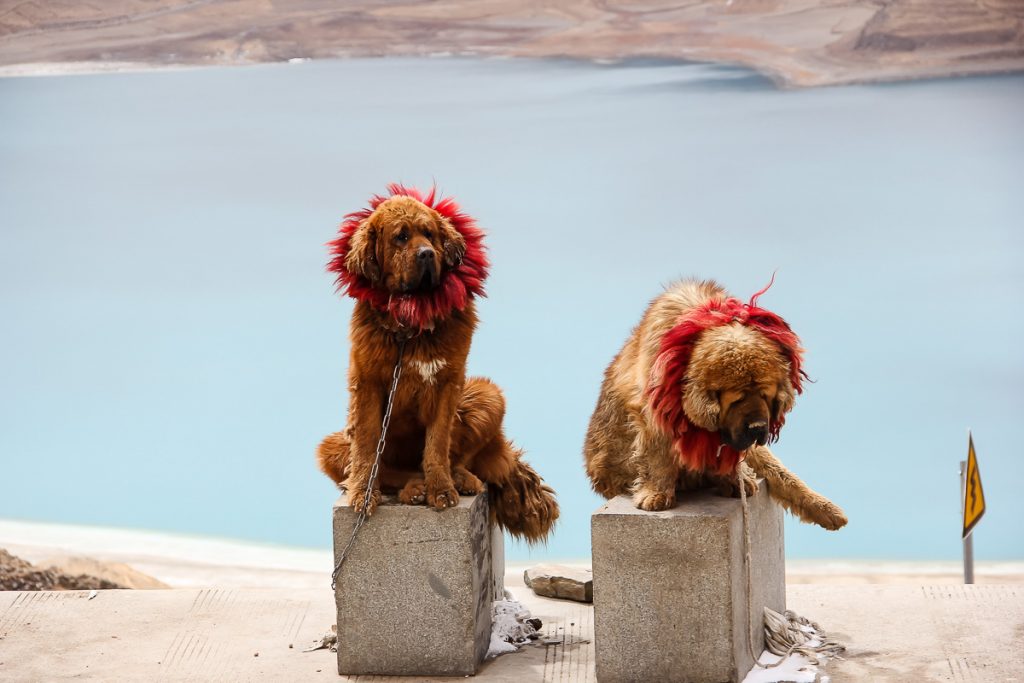
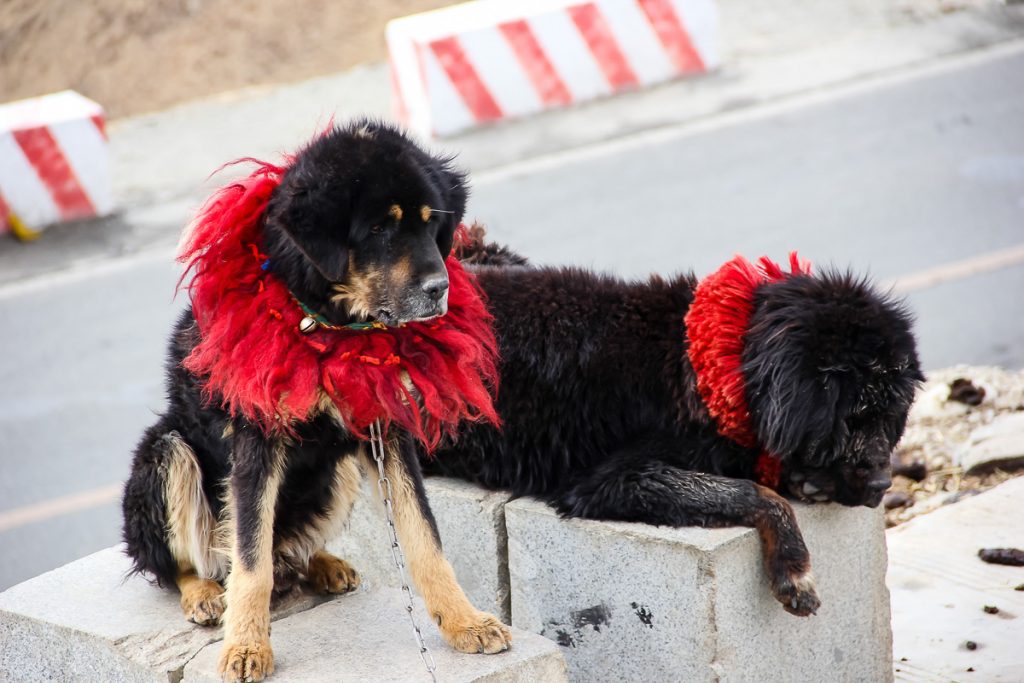
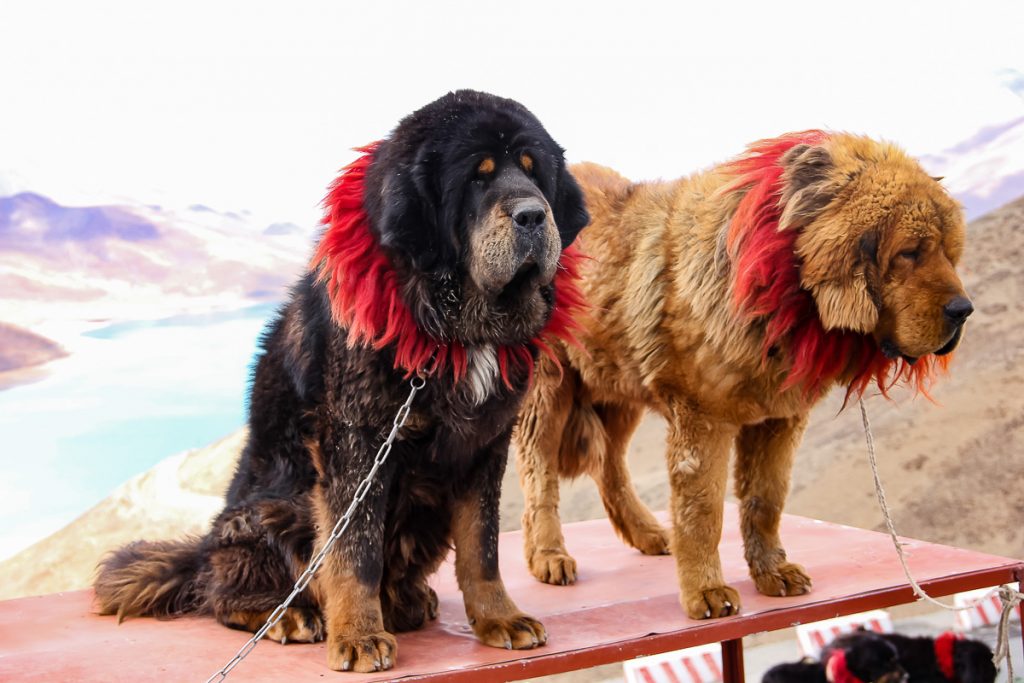
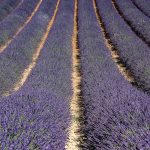

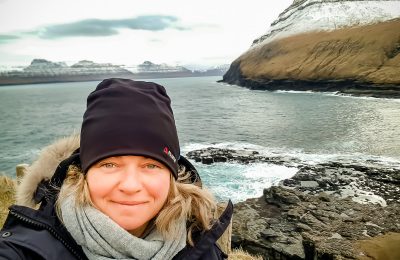


2 Comments
예스벳88
23 October 2020 at 01:51Best view i have ever seen !
Dana Mladin
25 October 2020 at 18:52Thanks a lot!